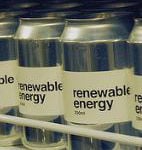As China debates climate change, there has much domestic controversy over whether action on global warming will influence the country's economic development. But creating a low-carbon economy, which will involve widespread changes – including emissions reductions, improvements in energy efficiency, adjustments in the energy infrastructure and launching carbon capture projects – may be a win-win choice for China, countering climate change at the same time as promoting economic and social progress.
The concept of the low-carbon economy emerged out of researchers’ attempts to propose a feasible and equitable mechanism for international society to reduce carbon emissions. The core idea was to reduce greenhouse-gas emissions through improving energy efficiency and employing clean technologies.
The widely used Kaya formula determines the four variables necessary to create any low-carbon economy.
|
Kaya formula: Emissions = population x gross domestic product (GDP) per capita x energy consumption per unit GDP x emissions per unit of energy consumption |
This describes emissions as a product of population size, consumption levels and efficiency of carbon and energy use.
In the case of China, the birth rate is below the world average level, but the country will still see a moderate increase in population in the coming decades. With regard to GDP per capita, China has an urgent mission to eliminate poverty and this should not be decreased unless there is no alternative. The emissions intensity per unit of energy consumption, which is usually interpreted as equivalent to the emission factor, will probably stay the same for many years unless there are huge breakthroughs in combustion technology. Therefore, the easiest factor for China to decrease should be the intensity of its energy consumption. In practice, China does have great potential to improve its energy consumption efficiency; one calculation shows that the country's energy-conservation efforts could in fact be five times greater than those of the United States, and 10 times those of Japan.
The promotion of a low-carbon economy in China would benefit social well being and economic development in the short- and long-term.
First, carbon is bound up tightly with the burning of fossil-fuels for energy. Reducing emissions by improving energy efficiency at every level will mean conserving energy, reducing reliance on energy imports and consolidating the country's energy security, as well as alleviating resource scarcity in China.
Second, mitigation projects in most sectors will mean reducing regional pollution levels and protecting local environments. For instance, coal washing in power plants reduces carbon dioxide emissions and also reduces pollutants with more local impacts than carbon dioxide, such as sulphur dioxide and mercury. Reforestation projects in Yunnan province, which benefit climate-change efforts, also protect local biodiversity by creating a bio-corridor for a nearby nature reserve.
Third, a low-carbon economy will create new job opportunities. According to the United Nations, China's solar energy industry employed over 150,000 people in 2005.
Moreover, developing a low-carbon economy will spur the development of innovative and advanced technologies, putting China at the leading edge of international competition. A recent analysis conducted by the UN Framework Convention on Climate Change showed that 37% of China’s projects in the pipeline of the Clean Development Mechanism, Kyoto's international emissions trading scheme, will involve technology transfer, from hydrofluorocarbon (HFC) technology to wind energy development.
So how is China reducing the intensity of energy consumption? The country’s current initiatives mainly lie in adjusting the energy infrastructure and improving energy efficiency.
Large changes in China's industrial structure in the 1980s and '90s meant energy consumption intensity nearly reduced by half. During this transition, a great many of inefficient national monopolies were overhauled and changed into smaller but efficient township and village industries.
Since the turn of the new century, China has focused on transforming its heavy industry in order to optimize energy consumption. It is clear from national directives issued by China's central economic planners that independent innovation and intellectual property should be the incentives that push heavy industries towards more advanced industry. China has sponsored its service industry, in particular, in order to dampen the economy’s reliance on highly energy-consuming manufacturing. In practice, however, these initiatives have been largely offset by the overwhelming growth in secondary industry.
On the energy supply side, structural adjustment has largely meant incentives to change the energy mix. The Renewable Portfolio Standard, which exemplifies this approach, fixed regional quotas for renewable energy for the eleventh Five Year Plan from 2005 to 2010. At the same time, great innovations in large-scale wind turbine technology have been developed and diffused with the help of the CDM.
Improving energy efficiency in production processes is another way to reduce the overall intensity of energy consumption. The target is to reduce energy consumption per unit of GDP by 20% during the eleventh Five Year Plan. Ten major programmes aim to meet this goal. The “top 1,000 energy-consuming enterprises programme” is one of these. Since these enterprises are responsible for 64% of industrial energy consumption and 33% of total energy consumption, the programme imposes energy conservation goals at every level, from energy-intensive chemical processes through to coal mining and textiles.
Demand-side management is the other, indispensable part of energy efficiency improvement, and it has been an administrative consideration for some time in China. In 2004, one Chinese electricity demand side management scheme eliminated 70% of electricity losses.
With progress in the construction of China's low-carbon economy has come a greater focus on technology transfer and innovation in clean and high-efficiency technologies. There has been a stable growth in international cooperation schemes, such as the CDM and Asia Pacific Partnership on Clean Development and Climate, advanced mitigation technologies and energy-efficiency technologies in recent years. Keeping up the pressure on energy consumption – and thus reducing Chinese emissions – will require technology transfer and protection systems to keep the flow of technologies in place.
Feng Chaoling is a master's degree candidate at Tsinghua University, Beijing. Feng's research focusses on the economic analysis of climate-change policies
CS Kiang is the founding dean of the College of Environmental Sciences, Peking University
Homepage photo by cargocycing


